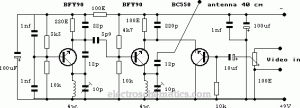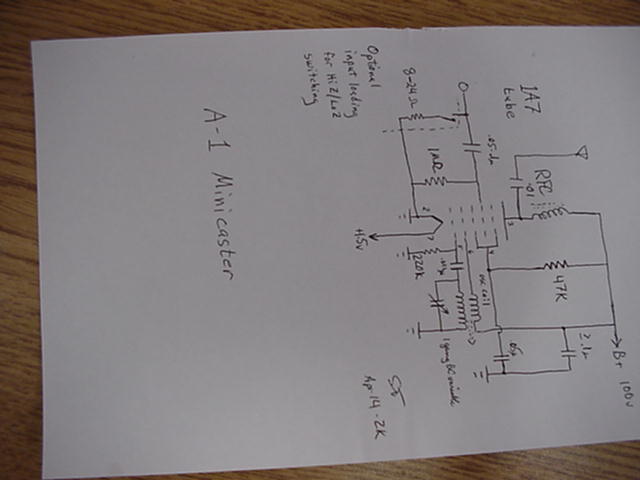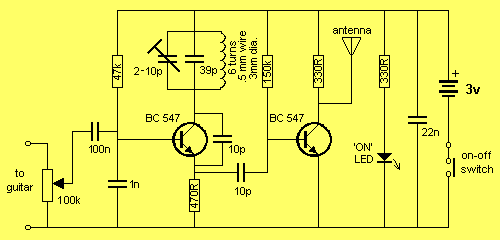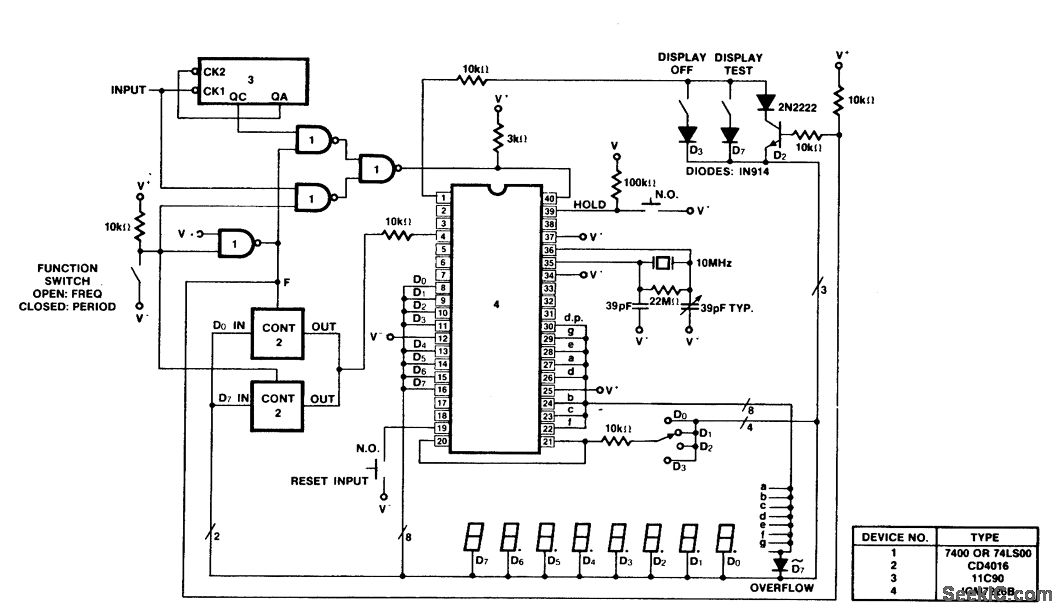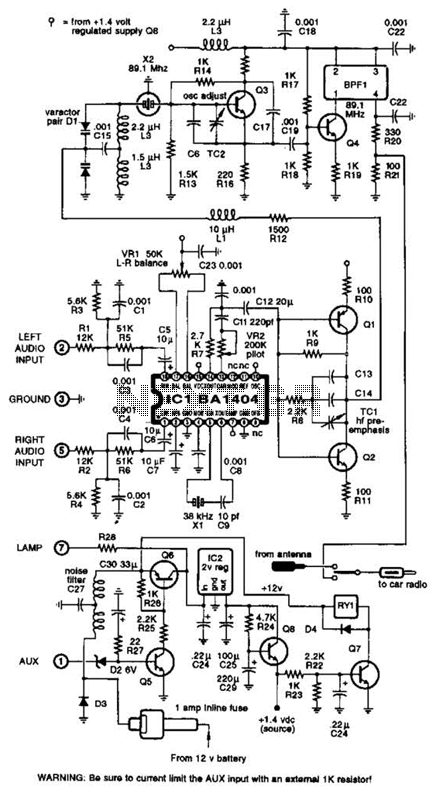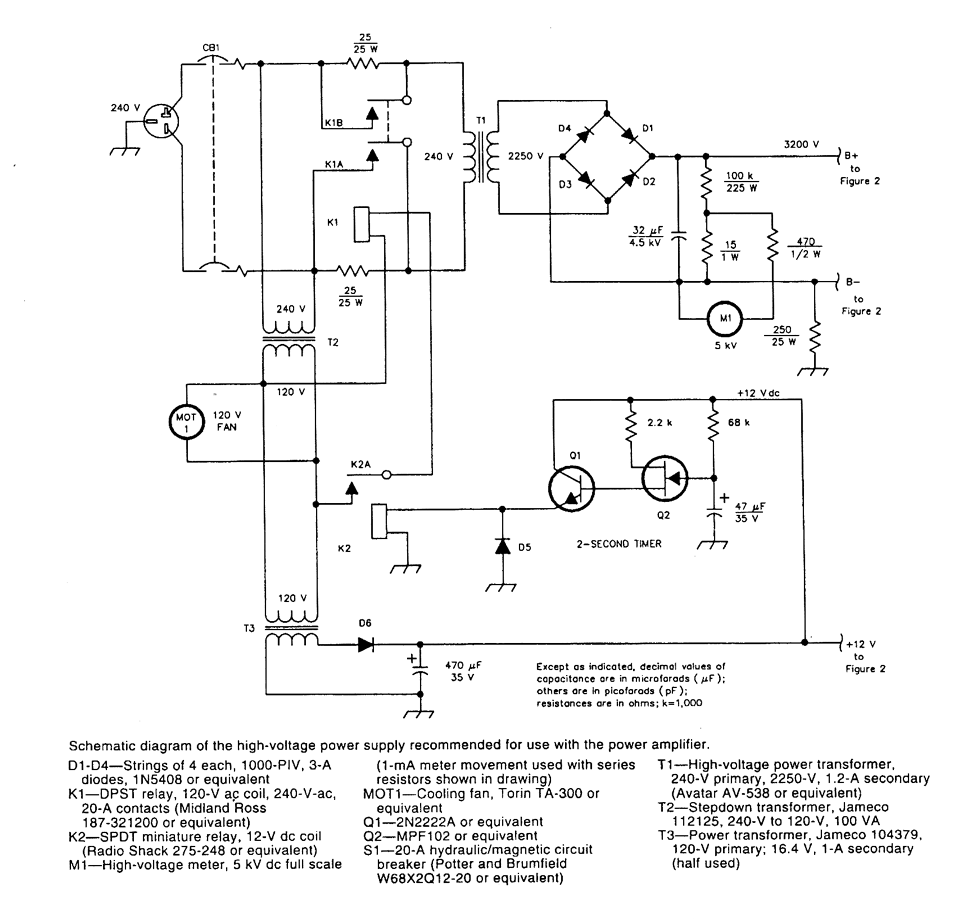
ETl3X220 FM FSK 27 MHz transmitter
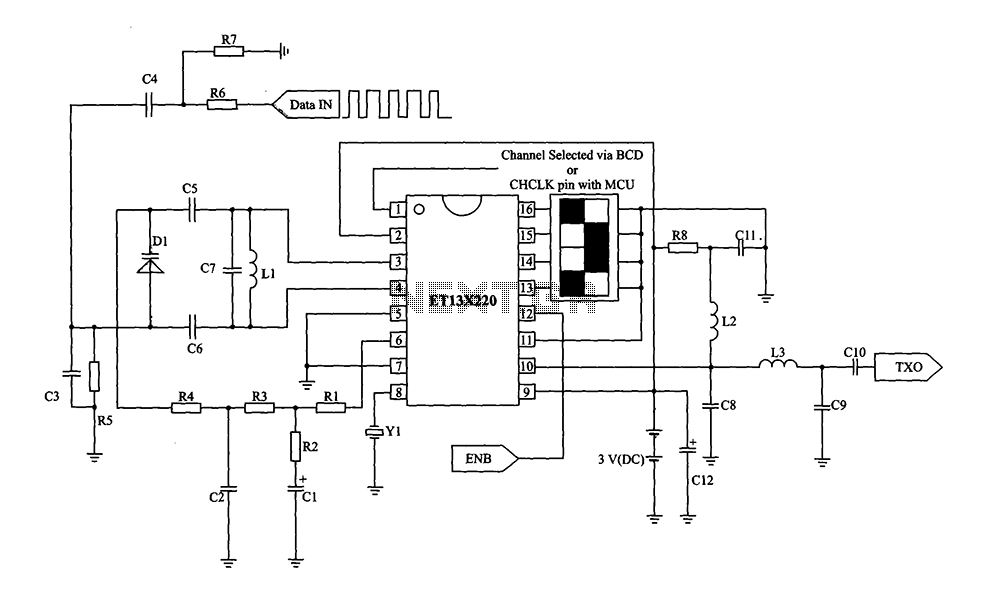
The ETl3X220 is connected to a low-cost single-chip RF transmitter, capable of supporting 10 communication channels for wireless mouse, keyboard, and other communication products. The main technical features include analog FM or digital FSK modulation with a channel spacing of approximately 30 kHz, a power supply voltage range of 2.3 to 3.6 V, and a current consumption of 8 mA, with a low-power mode drawing only 5 µA.
The ETl3X220 RF transmitter chip is designed for efficient communication in wireless applications, particularly for devices such as mice and keyboards. The device supports both analog frequency modulation (FM) and digital frequency shift keying (FSK), allowing for versatile communication methods depending on the application's requirements. The modulation frequency is adjustable with a channel spacing of 30 kHz, enabling multiple devices to operate simultaneously without interference.
The power supply requirements for the ETl3X220 range from 2.3 V to 3.6 V, making it suitable for battery-operated devices where power efficiency is critical. The standard operating current is 8 mA, which is relatively low for RF transmitters, contributing to longer battery life in portable applications. Additionally, the low-power mode is particularly advantageous, reducing the current consumption to just 5 µA, which is essential for energy-saving measures in wireless devices that may remain in standby for extended periods.
For application circuit design, the ETl3X220 can be integrated with minimal external components, simplifying the overall layout and reducing costs. Typical applications involve connecting the chip to a microcontroller, which manages the data to be transmitted. The RF output can be connected to an antenna for effective signal transmission. Careful consideration should be given to the layout to minimize interference and optimize the performance of the RF signal, ensuring reliable communication in various environments.ETl3X220 is connected to a low-cost single-chip RF-transmitter chip, can provide 10 communications for wireless mouse and keyboard applications and communications products. The main technical features are as follows: Analog FM or digital FSK modulation frequency of about 5 channel spacing 30 kHz; power supply voltage is 2.3 ~ 3.6 V; current consumption of 8 mA, low-power mode is 5 A. ETl3X220 application circuit
The ETl3X220 RF transmitter chip is designed for efficient communication in wireless applications, particularly for devices such as mice and keyboards. The device supports both analog frequency modulation (FM) and digital frequency shift keying (FSK), allowing for versatile communication methods depending on the application's requirements. The modulation frequency is adjustable with a channel spacing of 30 kHz, enabling multiple devices to operate simultaneously without interference.
The power supply requirements for the ETl3X220 range from 2.3 V to 3.6 V, making it suitable for battery-operated devices where power efficiency is critical. The standard operating current is 8 mA, which is relatively low for RF transmitters, contributing to longer battery life in portable applications. Additionally, the low-power mode is particularly advantageous, reducing the current consumption to just 5 µA, which is essential for energy-saving measures in wireless devices that may remain in standby for extended periods.
For application circuit design, the ETl3X220 can be integrated with minimal external components, simplifying the overall layout and reducing costs. Typical applications involve connecting the chip to a microcontroller, which manages the data to be transmitted. The RF output can be connected to an antenna for effective signal transmission. Careful consideration should be given to the layout to minimize interference and optimize the performance of the RF signal, ensuring reliable communication in various environments.ETl3X220 is connected to a low-cost single-chip RF-transmitter chip, can provide 10 communications for wireless mouse and keyboard applications and communications products. The main technical features are as follows: Analog FM or digital FSK modulation frequency of about 5 channel spacing 30 kHz; power supply voltage is 2.3 ~ 3.6 V; current consumption of 8 mA, low-power mode is 5 A. ETl3X220 application circuit
